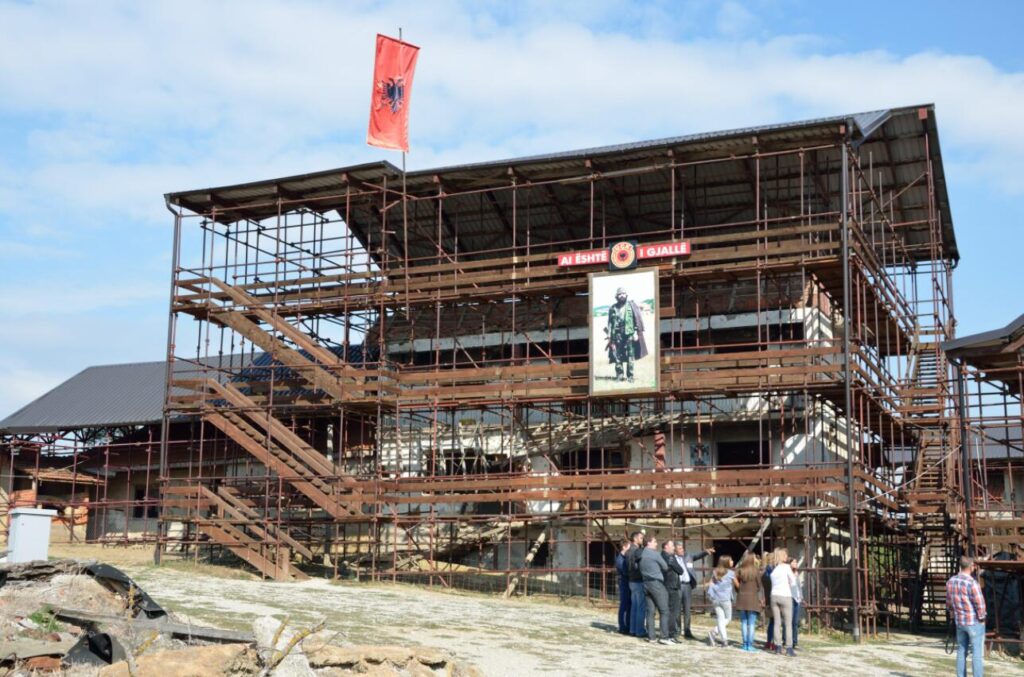Kosovo Social Security
Proportion of literate adults: 91.9% (2007)
Major religions: Islam, Christianity (Serbian-Orthodox, Roman-Cat.)
Urban population: 38% (2012)
Life expectancy (female / male): 81.6 years (2016)
Gender Inequality Index: –
Birth rate: 2.0 (2018)
Infant mortality: 10.6 per 1000 births (2018)
In 2001, a three-pillar pension system was established in Kosovo under the supervision of the World Bank and USAID introduced. In 2015, the pension expenditure of all pension benefits amounted to 4.5% of GDP. The first pillar comprises a basic pension that covers all persons who are permanently resident in Kosovo and who have reached the retirement age of 65 years. The corresponding pension payments are set at a flat rate of € 75 and therefore do not have any reference to the career history of the pensioners. The so-called wage replacement rate, which is around 17%, can be calculated from the ratio between the basic pension and the average wage. The basic pension is financed from the public budget. In 2018, 127,000 beneficiaries received the basic pension, which corresponds to 7.1% of the total population. The second pillar of the pension system follows the individualized funded principle. This pension system is compulsory for all employees born after 1946 and formally employed. 10% of the earned income (shared equally between employer and employee) is invested in an individual asset account each month, which is dated from Kosovo Pensions Savings Trust is managed. Upon retirement, the accumulated assets are transferred to a pension insurance scheme from which pension benefits are granted once or monthly. The total number of active contributors in this pillar was around 244,000 in 2017. Less than 7% of the special assets that have accrued to date (€ approx. 1,500 million, 2017) will be invested in Kosovo. Between 2002 and 2015, the Kosovo Pensions Saving Trust generated an annual return of 2.17%. The third pillar comprises voluntary, individually made pension payments as well as additional employer-financed pensions. The relevance of these optional pensions is negligible.
According to THESCIENCETUTOR, the law on the status and rights of families of martyrs, invalids and members of the UÇK as well as of civilian victims of war regulates the various benefits in favor of war disabled persons, e.g. B. family, disability or survivors’ pensions, but also tax exemptions, employment benefits or easier access to educational institutions. Pension benefits range from € 40 for civil war invalids to € 534 for families with four or more members who belonged to the Kosovo Liberation Army (KLA) and are considered missing. 201813,138 relatives of martyrs and invalids received a corresponding rent, in total approx. € 40.8 million and 38,345 war veterans received a veteran’s pension, in total € 70.1 million – together these social expenditures make up 1.7% of GDP. The level of expenditure in this service category has risen sharply in recent years and is likely to continue to rise. The services are almost entirely concentrated on the Albanian majority.
The basic social security law covers two categories of benefit recipients. Category I defines families as beneficiaries in which all family members are temporarily or permanently unavailable for the labor market, e.g. B. Children up to 14 years, young people up to 18 years, if they are integrated into the education system, single parents with at least one child under 15 years, people with severe and permanent disabilities over 18 years, older people over 65 years. Category II comprises those families in which at least one family member is available to the labor market and in which at least one child younger than 5 years or an orphan younger than 15 years is cared for. The benefits from both categories are linked to strict means tests. The monthly benefit varies from € 50 for a single person to a maximum of € 150 for a family with seven or more members, which corresponds to a wage replacement rate of 11.2% (individual). In 2018, around 25,345 families with around 103,409 family members received social assistance, a proportion of the population of 6%. At around € 32.9 million, or a share of 0.5% of GDP, the total expenditure is low. In Kosovo there are two special institutions that specialize in the care of adults with mental illnesses (in Shtime) and in the care of the elderly (in Prishtina). In addition, five municipal facilities for people with intellectual disabilities and facilities for the elderly were recently opened. The institutions in Shtime and Prishtina have been repeated with in the past linked to human rights abuses.
The capacities of institutionally provided social services are very limited. In addition, only a few locally accessible outpatient services have established themselves so far. One of the reasons for this is that the municipalities are financially heavily dependent on transfer payments from the state budget. The demand for care services is significantly lower than elsewhere in Europe due to the specific demographic reality in Kosovo, but also due to the pronounced role of traditional family structures. However, the demand will increase in the medium term, especially against the background of falling birth rates and increasing life expectancy, socio-structural changes, but also with regard to the migration movements in Kosovo.






